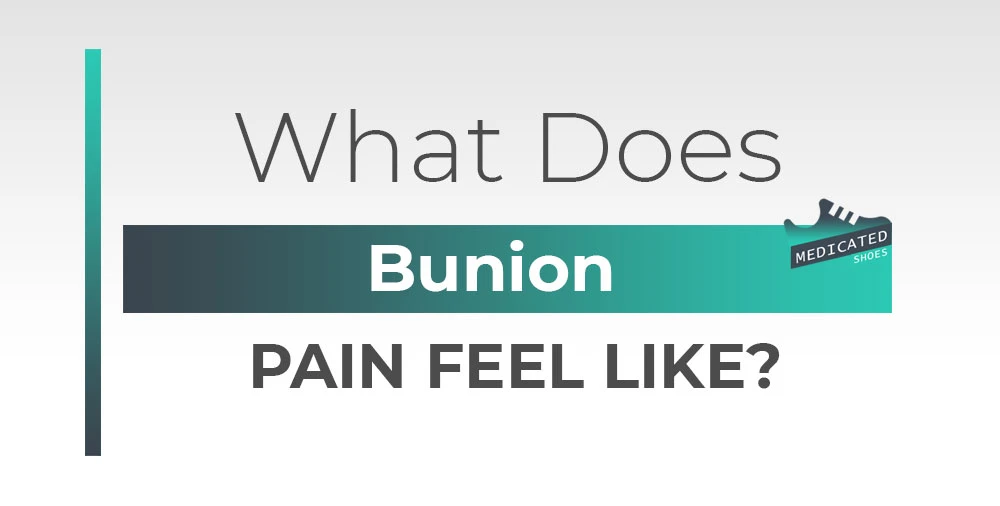Bunion pain can vary greatly in intensity and frequency. Some people may experience mild discomfort or occasional pain, while others may suffer from constant, severe pain. The pain may be a dull ache or a sharp stabbing sensation and it may be worse when walking or standing for long periods of time.
What Does Bunion Pain Feel Like?
Bunion pain is usually felt at the base of the big toe, where the bump is located. However, the pain may also radiate out to the rest of the foot or up into the leg. Some people with bunions may also experience pain in their ankles calves or knees.
Symptoms of Bunion Pain
The symptoms of bunion pain can vary from person to person but common signs include:
- A throbbing or aching sensation in the foot especially around the joint
- Redness and swelling around the joint
- Tenderness when the joint is touched
- Difficulty walking or standing for long periods of time
- Numbness or tingling in the toes
- A burning sensation in the foot
Causes of Bunion Pain
Bunion pain is usually caused by the abnormal positioning of the big toe joint, which can cause the surrounding muscles and ligaments to become strained. Some other common causes of bunion pain include:
- Wearing shoes that do not fit properly
- Having flat feet or a high arch
- Inheriting certain foot types that are prone to bunions
- Having certain medical conditions such as rheumatoid arthritis or gout
What Can You Do to Relieve Bunion Pain?
There are a number of ways to alleviate bunion pain and reduce the risk of further damage to the foot. Some of the most effective methods include:
Wearing Comfortable Wide shoes
Tight, narrow shoes can exacerbate bunion pain by putting pressure on the toes and forcing the big toe joint out of alignment. Choosing shoes with a wide toe box and plenty of room for the toes to move can help reduce the pain and pressure associated with bunions.
Using Bunion Pads
Bunion pads are small cushions that can be placed over the bump on the foot to help alleviate pain and reduce friction. They can be placed inside the shoe or worn on the outside of the foot to provide extra padding and support.
Taking Medication
Nonsteroidal anti-inflammatory drugs (NSAIDs) such as ibuprofen or naproxen, can help reduce inflammation and alleviate bunion pain. However, it is important to follow the recommended dosage and consult a healthcare professional before taking any medication.
Applying Ice
Applying ice to the bunion can help reduce inflammation and numb the pain. To do this, wrap an ice pack in a towel and place it on the bunion for 10-15 minutes at a time, several times a day.
Stretching
Stretching and strengthening the muscles and ligaments in the foot can help alleviate bunion pain and improve mobility. Some exercises that may be helpful include toe stretches calf stretches and toe raises.
Prevention of Bunion Pain
To help prevent bunion pain, it is important to wear shoes that fit properly and provide adequate support for the feet. Avoiding high heels and other shoes that put unnecessary pressure on the toes can also help reduce the risk of developing bunions.
If you are prone to bunions or have a family history of the condition it may be helpful to consult with a podiatrist to determine the best course of action to prevent the development of bunions.
When to See a Doctor
In most cases, bunion pain can be managed with the above self-care measures. However, if the pain is severe or persistent, it is important to see a doctor or foot specialist. A healthcare professional can diagnose the cause of the pain and recommend the appropriate treatment, which may include medications physical therapy, or surgery.
How do I know if it’s a bunion or gout?
Bunions and gout are two different conditions that can cause foot pain. Here are some key differences:
Location: Bunions are typically found on the side of the big toe joint, while gout most often affects the base of the big toe.
Symptoms: Bunions may cause swelling, redness, and difficulty walking, while gout typically causes sudden and severe pain, swelling, and redness in the affected joint.
Causes: Bunions are usually caused by wearing shoes that don’t fit properly or having high heels, while gout is caused by high levels of uric acid in the blood.
Treatment: Treatment for bunions may include rest, ice, physical therapy, or surgery while gout is typically treated with medications to reduce inflammation and lower uric acid levels.
Can bunions be left untreated?
It is not recommended to leave bunions untreated as they can become increasingly painful and cause other foot problems. Without treatment, bunions can cause the surrounding toes to become crowded and the deformity to become more severe.
Does a bunion hurt all the time?
Bunion pain can vary in intensity and frequency and may be worse when standing or walking or when wearing certain shoes. The underlying cause and stage of the deformity can also affect the severity of the pain.
Conclusion
Bunion pain can range from a dull, constant ache to a sharp, stabbing sensation, and it may be worse after long periods of standing or activity. It is important to speak with a medical professional for proper diagnosis and treatment if you are experiencing bunion pain as it can be a debilitating condition that affects daily activities. Proper care and treatment can help alleviate bunion pain and prevent further worsening of the condition.

